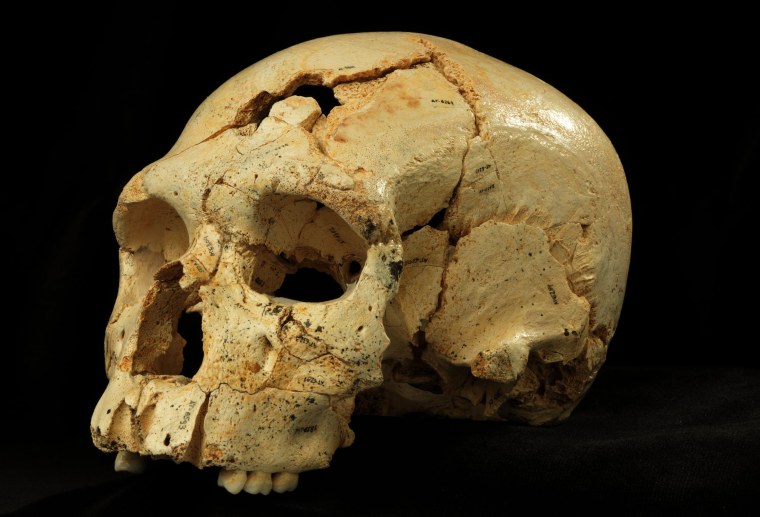This 430,000-year-old case may be the world's oldest murder mystery. Scientists on Wednesday said a fossilized skull discovered deep inside a Spanish cave shows telltale signs of homicide: two fractures inflicted by the same weapon. The skull, belonging to a primitive member of the Neanderthal lineage, was found in an apparent funerary site down a shaft in the appropriately bleak-sounding Sima de los Huesos, Spanish for "Pit of the Bones," in the Atapuerca mountains. The skull shows that our species, Homo sapiens, cannot claim a monopoly on murder. "This individual was killed in an act of lethal interpersonal violence, providing a window into an often-invisible aspect of the social life of our human ancestors," said paleontologist Nohemi Sala of Madrid's Centro Mixto UCM-ISCIII de Evolución y Comportamiento Humano.
This oldest-known example of murder occurred 230,000 years before our species first appeared in Africa. "Based on the similarities in shape and size of both the wounds, we believe they are the result of repeated blows with the same object and inflicted by another individual, perhaps in a face-to-face encounter," Sala added.
Remains of nearly 30 individuals were found at the bottom of the 43-foot (13-meter) shaft. The murder victim suffered two penetrating fractures on the forehead's left side, above the eye. Using forensic methods like those employed by police, the researchers interpreted the wounds, each nearly an inch (2 cm) wide, as evidence of blunt-force trauma occurring around the time of death. "We have examined the bone microscopically and used CT scans," added paleontologist Juan Luis Arsuaga of the Universidad Complutense de Madrid.
Sala said the weapon may have been a wooden spear, stone spear tip or stone hand-axe. The presence of a notch at a similar location in the outlines of both fractures indicates they were caused by the same object. "Since either of these wounds would likely have been lethal, penetrating the brain, the presence of multiple wounds implies an intention to kill," Sala said.
Arsuaga said the victim was a young adult. Whether it was a man or woman is not clear. The motive and perpetrator are unlikely ever to be known. "Unfortunately, the intentions do not fossilize, so it is impossible to interpret the motivation of the killing," Sala said. "Not even Sherlock Holmes could help us in that."
The research appears in the scientific journal PLOS ONE.
IN-DEPTH
- Skeleton Found in Italy Cave Yields Oldest Neanderthal DNA
- 55,000-Year-Old Skull Sheds Light on Early Human Migration
